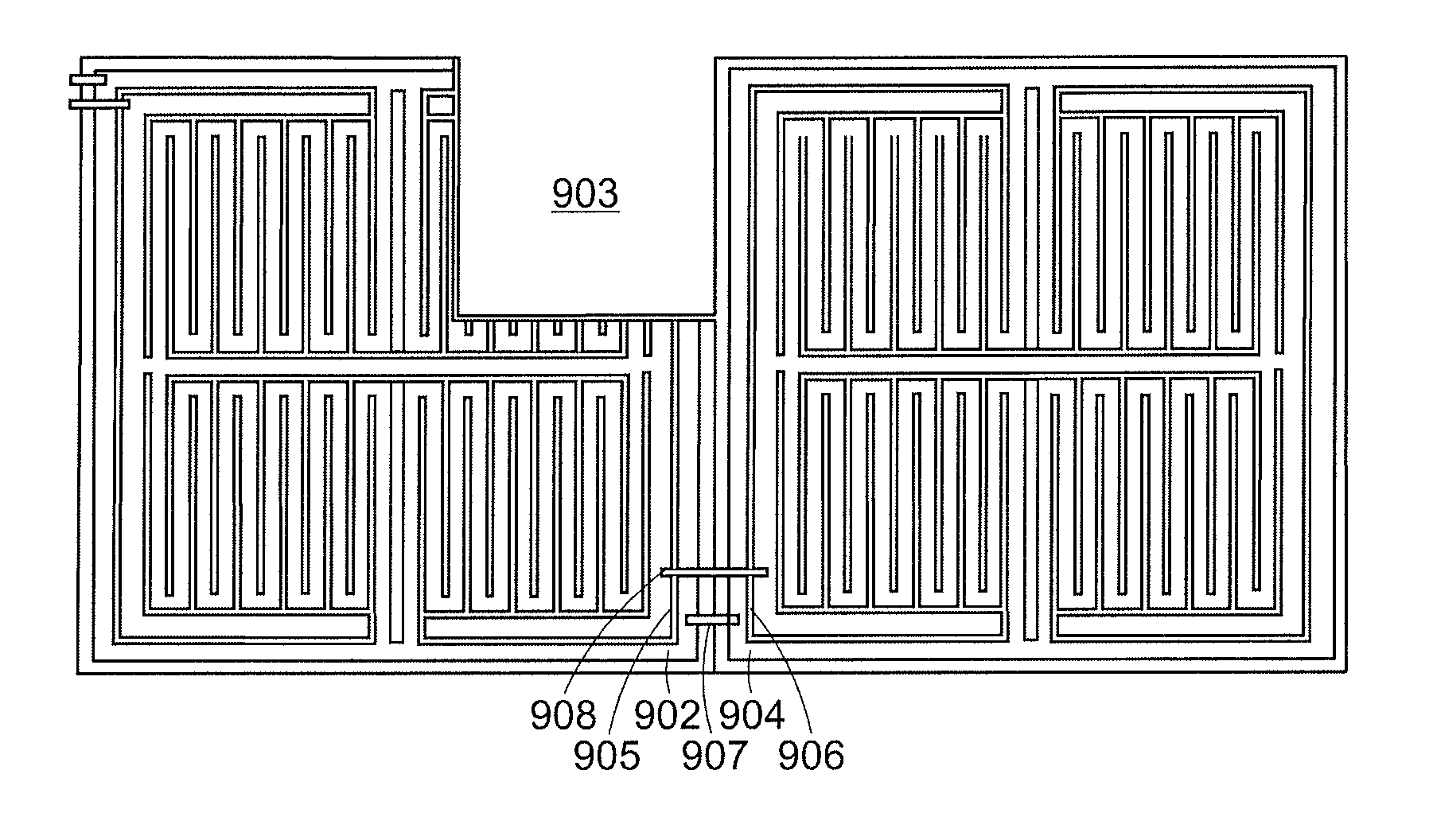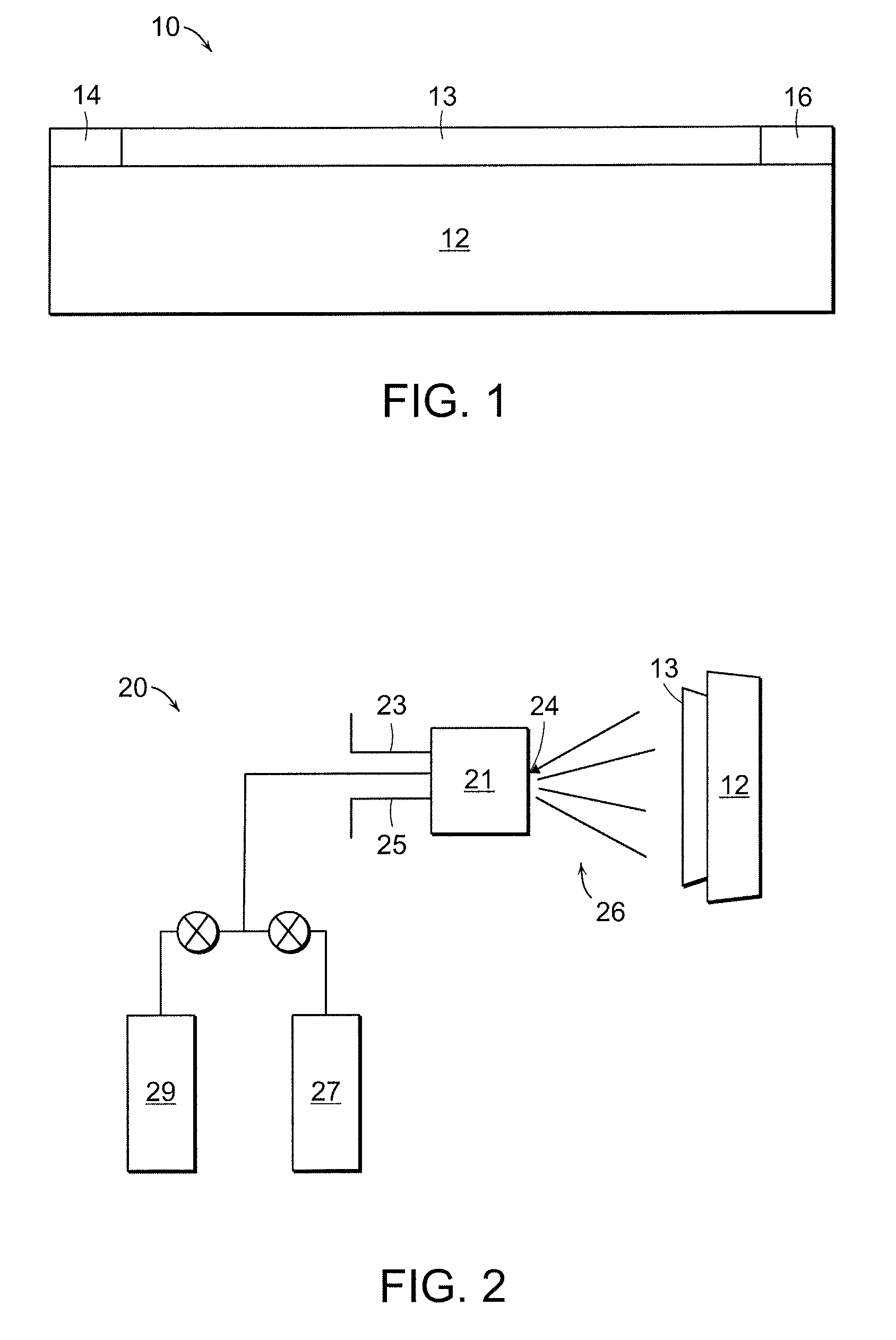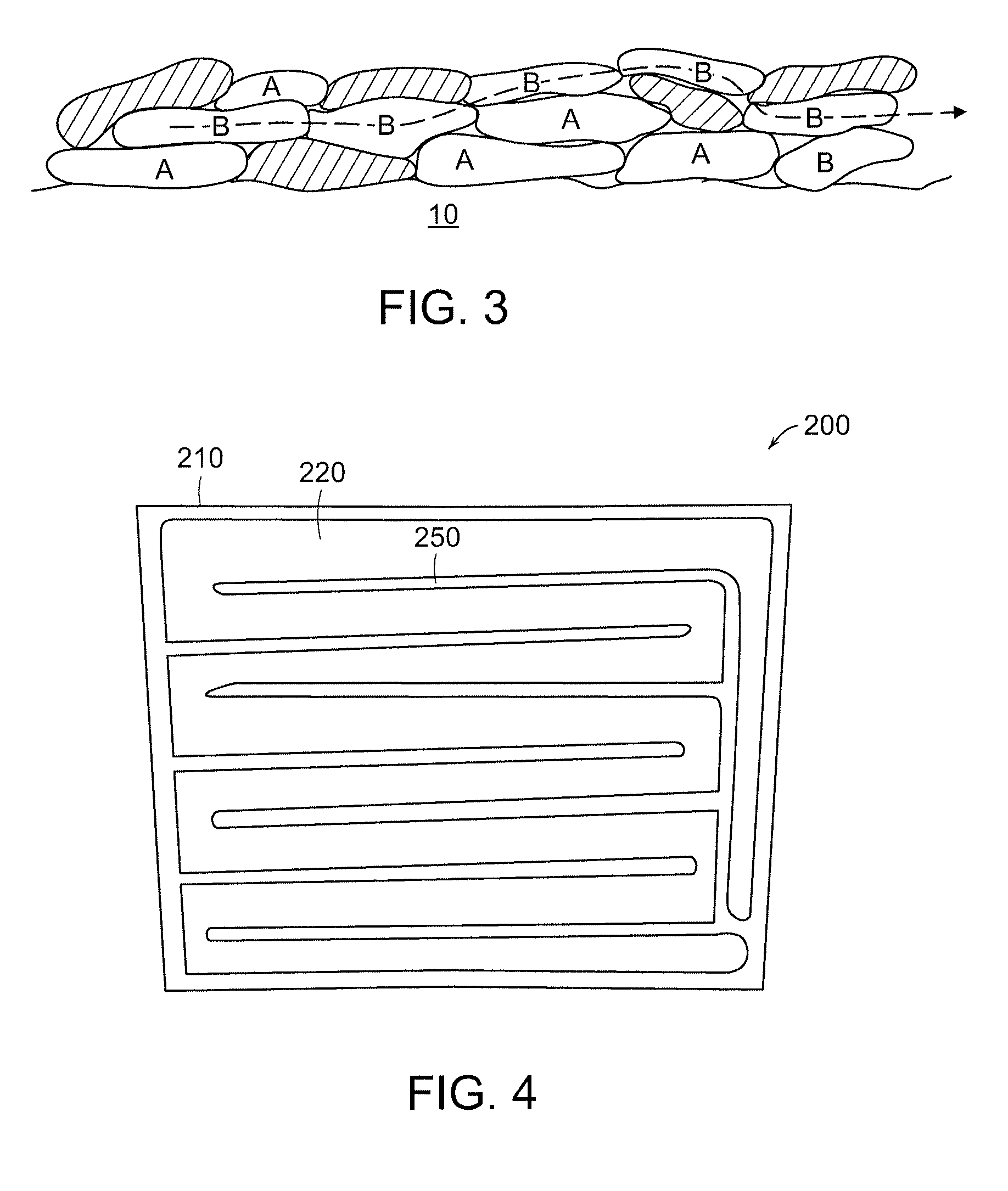Radiant heating using heater coatings
a technology of heating and heating coils, applied in the direction of energy-efficient heating/cooling, combustion process, combustion ignition, etc., can solve the problems of heat transfer, inefficient and complicated hydronic systems, complex installation of hydronic systems, etc., and achieve low manufacturing cost, easy installation, and efficient energy utilization
- Summary
- Abstract
- Description
- Claims
- Application Information
AI Technical Summary
Benefits of technology
Problems solved by technology
Method used
Image
Examples
Embodiment Construction
[0036]Referring now to FIG. 1, a preferred embodiment of a radiant heating system is shown generally at 10, and includes a backer board substrate 12, a patterned resistive material 13 disposed on the substrate 12, and interconnects 14 and 16. Backer board substrate 12 may be any of a number of materials, but in a preferred embodiment it is formed of a cementous material that is designed to underlay tile or other floor finish materials.
[0037]The resistive heating material 13 is preferably formed by a thermal spray process. Thermal spray is a versatile technology for depositing coatings of various materials, including metals and ceramics. It includes systems that use powder as feedstock (e.g., arc plasma, flame spray, and high velocity oxy-fuel (HVOF) systems), systems that use wire as feedstock (e.g., arc wire, HVOF wire, and flame spray systems), and systems using combinations of the same.
[0038]Thermally sprayed resistive heating layers can be deposited on a wide variety of underlay...
PUM
| Property | Measurement | Unit |
|---|---|---|
| speeds | aaaaa | aaaaa |
| temperatures | aaaaa | aaaaa |
| temperatures | aaaaa | aaaaa |
Abstract
Description
Claims
Application Information
 Login to View More
Login to View More - R&D
- Intellectual Property
- Life Sciences
- Materials
- Tech Scout
- Unparalleled Data Quality
- Higher Quality Content
- 60% Fewer Hallucinations
Browse by: Latest US Patents, China's latest patents, Technical Efficacy Thesaurus, Application Domain, Technology Topic, Popular Technical Reports.
© 2025 PatSnap. All rights reserved.Legal|Privacy policy|Modern Slavery Act Transparency Statement|Sitemap|About US| Contact US: help@patsnap.com



